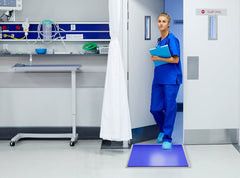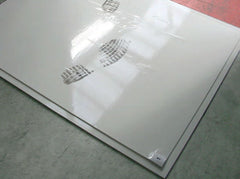Cleanroom matting is essential for maintaining the stringent cleanliness standards of cleanroom environments. It effectively minimises particle contamination from foot traffic and equipment wheels. Its layered or textured design traps dirt, dust, and other contaminants, significantly reducing particle proliferation in sensitive areas. Additionally, mats with antimicrobial properties inhibit bacterial growth, while static dissipative options safeguard sensitive electronic components from electrostatic discharge, which is crucial in the electronics and pharmaceutical industries.
Additionally, these mats have excellent durability and are easy to maintain, ensuring long-term effectiveness that can withstand the rigorous cleaning protocols typical in cleanrooms. Although cleanroom matting is highly effective on its own, its performance can be maximized when integrated into a comprehensive contamination control strategy that includes proper cleanroom conduct, regular cleaning, and adherence to strict operational protocols. This holistic approach guarantees that cleanroom matting contributes effectively to the critical goal of contamination control and precision in cleanroom operations.
Various types of cleanroom matting are available to cater to the specific needs of different cleanroom environments. Each type offers unique features and benefits to ensure compliance with the stringent standards required in such controlled settings. Two notable types include Tacky Mats and Hygienic Anti-Fatigue Matting:
Tacky Mats (Adhesive Mats):
- These mats are designed with multiple layers of adhesive-coated sheets that effectively capture and retain dirt, dust, and particles from shoes and cart wheels as they pass over.
- Each layer is numbered and can be easily peeled off to reveal a new clean surface, ensuring continuous contamination control.
- Tacky Mats are ideal for entryways into cleanrooms or controlled environments to prevent contaminants from entering.
Hygienic Anti-Fatigue Matting:
- These mats are specially designed to provide comfort and reduce fatigue for workers who stand for long periods, without compromising the cleanroom's hygienic standards.
- Made from easy-to-clean and disinfect materials, these mats often feature antimicrobial properties that inhibit the growth of bacteria and mould.
- The anti-fatigue properties help improve productivity and worker well-being, making these mats a valuable addition to areas within the cleanroom where staff spend extended periods standing.






